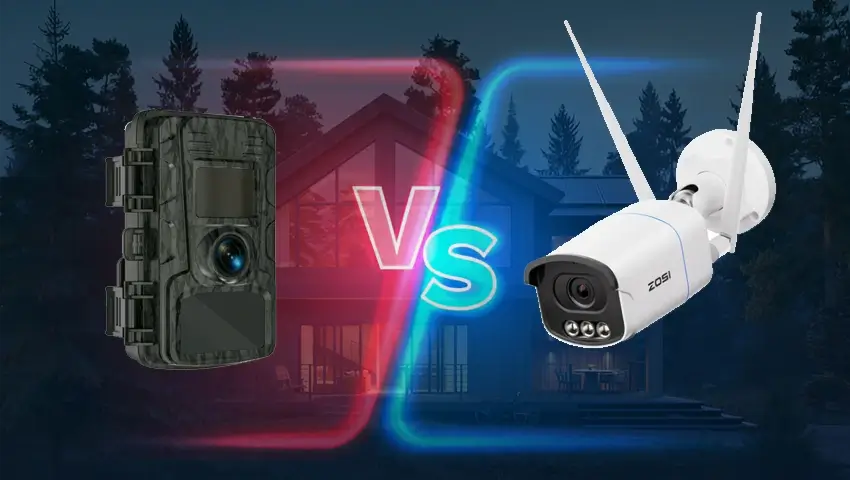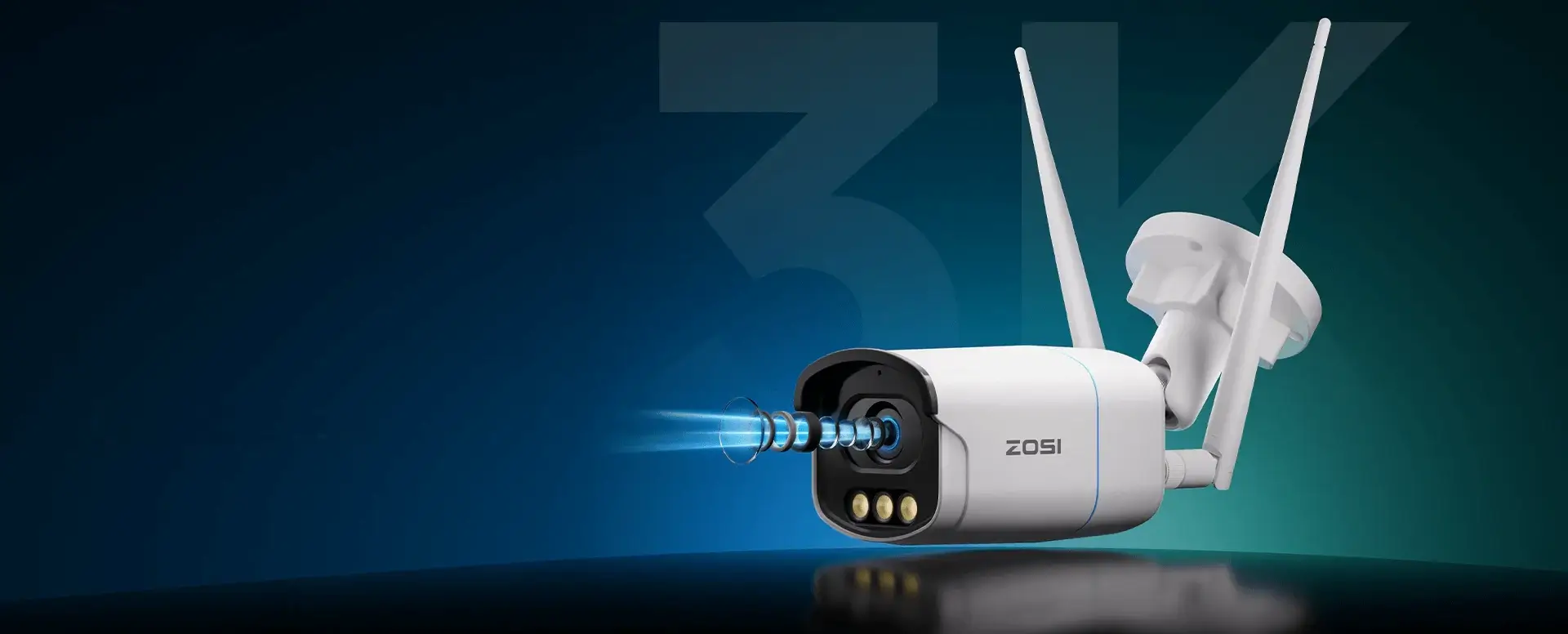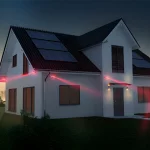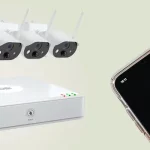Home security is a top priority for everyone, but finding the right equipment can sometimes be challenging. If you’re looking for security cameras for your home, consider an unconventional but effective option: trail cameras.
Contents
The Versatility of Trail Cameras for Home Security
Trail cameras, also known as remote or game cameras, are typically used by hunters and sports photographers. However, they are also highly effective for home security surveillance.
Can You Use Trail Cameras for Home Security?
The answer is a resounding YES. Trail cameras come equipped with key features that make them ideal for home security.
Why Trail Cameras Are Suitable for Home Security
Here are several reasons why trail cameras are great for safeguarding your home:
- Motion Detection: Trail cameras feature Passive Infrared (PIR) sensors or heat sensors, detecting temperature changes or moving objects. Originally designed to capture wildlife, these sensors are also excellent for spotting suspicious activity around your property.
- Night Vision: Equipped with night vision, trail cameras excel in nocturnal surveillance, ensuring your home is protected even in the dark.
- Remote Access: Modern trail cameras often include remote access, allowing you to download videos and photos directly to your phone or computer via cellular or Wi-Fi transceivers. Cellular trail cameras use a SIM card connected to a cell network, providing seamless remote monitoring.
- Easy Installation: Battery-powered trail cameras can be placed anywhere, even in remote locations without power outlets. Their installation is wire-free, allowing you to set them up in hard-to-reach spots like trees or shed roofs without affecting your energy bill. Additionally, the batteries can last for months, reducing the need for frequent changes.
Drawbacks of Trail Cameras for Home Security
While trail cameras offer undeniable benefits for home security, such as adding an extra layer of protection and being potentially less expensive than professional security cameras, they do have some notable drawbacks. Here are a few considerations:
- Not Suitable for Indoor Use: Trail cameras are designed with rugged, camouflage exteriors to blend into outdoor environments, which can clash with indoor decor. In contrast, many home security cameras have sleek, white designs that complement most interior settings.
- Lack of Pan/Tilt Functionality: Unlike professional security cameras, trail cameras have fixed lenses and do not offer pan/tilt capabilities. This limitation means they might miss activity happening outside their fixed field of view. Pan/tilt cameras provide greater flexibility in monitoring various areas of your property.
- Short Battery Life: Trail cameras that run on AA batteries can experience short battery life, especially when recording videos. This requires frequent monitoring and replacement of batteries, or keeping backup batteries handy.
- Limited App Functionality: The mobile and desktop apps that accompany trail cameras often offer fewer features compared to those designed for professional security cameras. This could limit your ability to monitor and manage your home security effectively.
Trail Camera vs. Security Camera: Key Differences
Understanding the differences between trail cameras and security cameras can help you choose the right tool for your needs:
- Purpose: Trail cameras are primarily designed for tracking wildlife, while security cameras are specifically engineered for surveillance and security purposes.
- Continuous Monitoring: Security cameras provide continuous 24-hour video feeds, allowing for real-time monitoring. In contrast, trail cameras only capture pictures and short videos upon detecting motion.
- Visibility and Deterrence: Professional security cameras are often more noticeable and can act as a deterrent to criminals. A visible camera can prevent potential intruders from targeting your property.
- Advanced Features: Security cameras come with a range of advanced features, including pan/tilt/zoom (PTZ) capabilities, Power over Ethernet (PoE) for easier installation, and compatibility with network video recorder (NVR) systems for monitoring multiple cameras simultaneously.
Wildlife Cameras Explained
Wildlife cameras, or trail cameras, are specifically designed to capture photos and videos of animals in their natural habitats. These cameras activate instantly upon detecting movement and can save files wirelessly via Wi-Fi or to a memory card for easy transfer to a computer.
Professional Advice
If you already own a trail camera and wish to use it for home security, it can certainly serve that purpose. However, for specialized security needs, professional security cameras are the recommended choice due to their advanced features and design for surveillance.
Should you need a professional security camera, we offer an extensive range with features such as 4G connectivity, various sizes, PTZ functionality, and robust wireless capabilities. These features make the difference between a good camera and an outstanding one, ensuring you have reliable and comprehensive home security.
Professional security cameras are built to withstand daily use and challenging conditions, ideal for settings like offices or retail stores, and ultimately providing you with the durability and functionality you need for effective surveillance.
Setting Up a Trail Camera for Security Surveillance
If you’re considering using a trail camera as part of your home security system, follow these steps to ensure it is optimized for security surveillance.
Before You Start
- Check for Time Stamps: Ensure your trail camera can add time stamps to its footage. Time stamps help you track activities on your property and are crucial if you need the footage as evidence.
- Test the Camera: After installing the camera, test it to confirm that everything is functioning correctly. Discovering an issue too late could compromise your security. Always have a plan B in case something goes wrong.
- Decide on Visibility: The visibility of your trail camera is up to you. If you prefer it hidden, place it somewhere discreet where it won’t attract attention. This allows it to capture events without being noticed.
Hiding Your Trail Camera
Here are some effective ways to conceal your trail camera for home security:
- Use the Shade: Place your trail camera in shadowed areas or dark corners of your yard. Trees can offer excellent cover while providing a clear view of your property’s surroundings.
- Blend with the Surroundings: Consider camouflaging your camera by painting it in colors that match its environment or using natural foliage to disguise it.
- Position Above Eye Level: People are less likely to notice things above their heads. Mount your camera high and angle it downward to capture clear footage without drawing attention.
- Utilize the Environment: Hide your camera in birdhouses, tree stumps, or even fake rocks to keep it inconspicuous.
Choosing the Right Trail Camera (or Consider ZOSI Security Cameras for Better Results)
When selecting a trail camera for home security, consider the following factors:
| Feature | Description | ZOSI 1NC-1865W Advantage |
| Resolution | Higher resolution ensures clearer images, which is vital for surveillance purposes. | Features 5MP True Color Night Vision, powered by an AI-driven Image Signal Processor (ISP) that fine-tunes every pixel in real-time, delivering intricate details and lifelike colors. |
| Detection Range | Ensure the camera’s detection range meets your needs, typically between 20 and 120 feet. | Detects motion and actively deters intruders with a built-in light and siren system, providing real-time alerts and a strong defense for your property. |
| SD Card Support | If you prefer local storage, ensure the camera supports SD cards and verify its maximum memory capacity. | Supports up to 256GB of local storage, offering ample space for long-term video recordings without the need for monthly fees or external storage solutions. |
| 4G/Wi-Fi Connectivity | Allows access to videos and pictures remotely, provided there’s a phone signal. | Offers dual-band Wi-Fi support (2.4GHz/5GHz), providing extended coverage and faster speeds for data-heavy tasks. |
| Trigger Time | Opt for a camera with a trigger time shorter than one second to ensure quick capture of movement. | ZOSI 1NC-1865W allows for real-time video streaming and two-way audio via the ZOSI Smart App, giving you full control over your security from anywhere. |
| Light Options | Decide between no-glow and low-glow cameras. No-glow cameras emit invisible light, making them harder to detect at night, while low-glow cameras emit a faint light. | Stands out with Aurora Lux Color Night Vision technology, delivering full-color, true-to-life footage in low-light conditions as dim as 0.001 lux, turning night into day with stunning clarity. Learn more about the ZOSI Aurora Lux Series: True Color Night Vision Camera here. |
5MP AuroraLux Security Camera - C186
- 3K/5MP Super HD
- AuroraLux True Color Night Vision
- 3000K Neighbor-Friendly Warm Light
- Smart Person/Vehicle Detection
- Light & Siren Deterrence
- Two-Way Audio Talk
- 128GB SD & PoE NVR
- IP66 Waterproof Design
Final Thoughts
Using trail cameras for home security is a practical option, and they can perform reasonably well. However, for comprehensive security surveillance, professional security cameras like those from ZOSI are recommended. They come with advanced features such as two-way audio, 24/7 recording, and full integration with smart home devices like Alexa, offering superior performance and reliability for your home’s protection.






